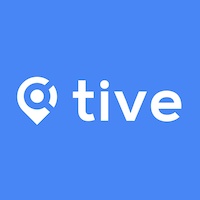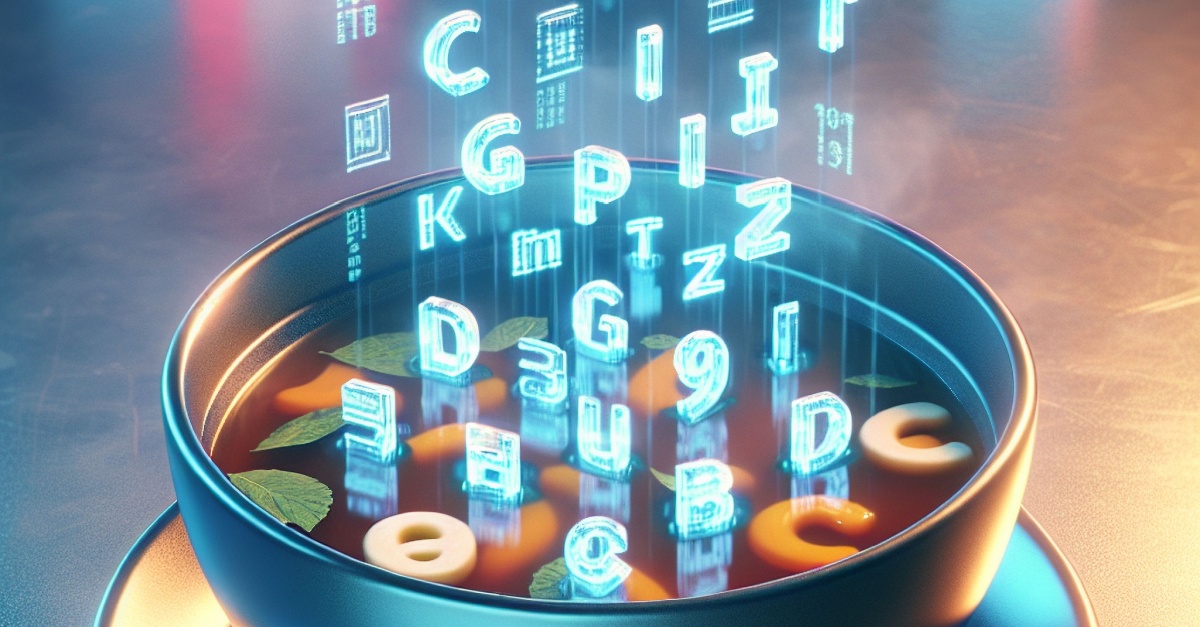Technischer Leitfaden für die Logistik: Von RFID bis 5G — Tracking-Technologien im Überblick

August 21, 2025
October 24, 2025
x min. Lesedauer

Ihre Millionen-Dollar-Lieferung ist gerade zwischen Dallas und Denver verschwunden: Die Temperatursensoren wurden dunkel. Sie haben keine Ahnung, ob Ihre Medikamente fallen gelassen wurden, Ihre Elektronik durchgebrannt ist oder ob Ihre Edelmetalle einen Umweg genommen haben. Oder ob es sich um einen anderen Fall von handelt Ladungsdiebstahl.
Tracking-Technologien können die Antworten enthalten, aber die Buchstabensuppe an Optionen — GPS, RFID, Bluetooth-Beacons, Mobilfunk-Tracker, 5G, RedCap — kann selbst die erfahrensten Branchenexperten überwältigen. Jede Technologie dient unterschiedlichen Zwecken, kostet unterschiedliche Beträge und funktioniert besser für bestimmte Ladungsarten. Versender von Impfstoffen stehen vor anderen Herausforderungen als Elektronikhersteller. Lebensmittelunternehmen brauche andere Lösungen als Transporter für Metalle.
Wir durchbrechen also den technischen Lärm, um zu erklären, was hinter den einzelnen Tracking-Technologien steckt, wann sie am besten zu Ihnen passen könnte und warum.
GPS: Das zuverlässige Arbeitspferd der Tracking-Technologien
GPS macht genau das, was Sie von ihm erwarten: Satelliten senden Positionsdaten herunter, Ihr Gerät berechnet, wo es sich auf der Erde befindet, und Sie erhalten Breiten- und Längenkoordinaten bis auf etwa 15 Fuß genau unter freiem Himmel.
Gebäude und Lagerhäuser stören das Signal, aber Mobilfunk- und WiFi-Unterstützung helfen dabei, diese Lücken zu schließen. GPS eignet sich hervorragend für die Ortung von Lastwagen, Schiffen, Flugzeugen und Zügen im Freien. Sie erhalten Breadcrumb-Trails, die genau zeigen, wohin Ihre Sendung gereist ist, und realistische Ankunftszeiten.
Mobilfunk-Tracker: All-in-One-Überwachungslösung
Mobilfunk-Tracker nutzen GPS und laden es mit Echtzeit-Datenübertragung auf. Diese batteriebetriebenen Geräte kombinieren Satellitenpositionierung mit Mobilfunknetzen, um Standort- und Sensordaten direkt auf Ihr Armaturenbrett zu übertragen. Die meisten laufen auf LTE-M- oder LTE CAT-1bis-Netzwerken für eine zuverlässige globale Abdeckung.
Was macht Mobilfunk-Tracker so besonders? Sie verpacken mehrere Sensoren in einem Gerät. Temperatur, Luftfeuchtigkeit, Schock, Lichteinwirkung — Sie erhalten ein vollständiges Bild davon, was mit Ihrer Ladung passiert.
Wenn Sie die Tatsache hinzufügen, dass diese Tracking-Technologien grenzüberschreitend funktionieren, die Flugvorschriften einhalten und bieten Sichtbarkeit der Lieferung in Echtzeit, die Vorteile werden für temperaturempfindliche Fracht, die ständig überwacht werden muss, vielfältig, wie Pharmazeutika, Essen, und hochwertige Sendungen.
Bluetooth-Beacons: Präzises Tracking, wo GPS ausfällt
Bluetooth-Beacons lösen die Mängel der GPS-Ortung in Innenräumen. Diese winzigen Tags senden Signale an Leser in der Nähe: Ihren Mobilfunk-Tracker, ein festes Gateway oder sogar Smartphones. Sie laufen drei bis fünf Jahre lang mit einer einzigen Batterie und funktionieren in einer Entfernung von 30 bis 300 Fuß von ihrem Lesegerät.
Standard-Beacons sagen Ihnen, in welcher Zone sich Ihre Ladung befindet. Neuere Bluetooth 5.1-Modelle Mit der Peiltechnologie können Sie Gegenstände innerhalb von drei Fuß lokalisieren. Lebensmittelhändler kleben sie auf Paletten, um den Bestand in Kühlhäusern nachzuverfolgen. Versorgungsmanager in Krankenhäusern verwenden sie, um teure medizinische Geräte auf mehreren Stockwerken zu lokalisieren.
Bluetooth-Beacons sind am besten, wenn Sie bereits andere Tracking-Technologien eingesetzt haben. Sie erweitern Ihre Sichtbarkeit von der Anhängerebene bis hinunter zu einzelnen Artikeln und Paletten und sorgen für eine mehrschichtige Überwachung, mit der Probleme im Keim erstickt werden können.
RFID-Tags: Schnelllesen für Masseninventar
RFID-Tags funktionieren wie ausgepresste Barcodes, die nicht gescannt werden müssen. Diese batterielosen Etiketten werden von den Lesegeräten entzippt und geben sofort ihre Identität bekannt. Ein Leser kann sogar 1.000 Artikel pro Sekunde identifizieren aus mehreren Metern Entfernung; versuchen Sie das mit einem Barcodescanner.
Elektronikhersteller kleben RFID-Etiketten auf Produkte, um die Lagerzählungen innerhalb von Minuten statt Stunden zu durchlaufen. Pharmaunternehmen lesen ganze Paletten mit Medikamenten an den Ladetüren ab, ohne die Kartons zu öffnen. Lebensmittelhändler überprüfen den Inhalt der Sendung, bevor Lastwagen das Werk verlassen.
RFID eignet sich zwar hervorragend für die Überwachung von Drosselstellen und die Überprüfung von Massenbeständen, reicht jedoch nicht aus, um den Standort kontinuierlich zu verfolgen. Sie wissen, wenn markierte Artikel Lesezonen passieren, aber Sie verlieren die Sicht zwischen diesen Punkten. Deshalb funktionieren diese Tracking-Technologien am besten, wenn sie mit GPS- oder Mobilfunk-Trackern kombiniert werden — das stimmt Durchgängige Transparenz der Lieferkette.
5G REDCap: Die nächste Generation von Tracking-Technologien
5G RedCap (reduzierte Kapazität) verändert das Tracking-Spiel, indem es 5G-Geschwindigkeiten ohne die stromhungrige Hardware liefert. Diese kostengünstigen Modems mit niedrigerem Stromverbrauch schließen die Lücke zwischen aktuellen LTE-Trackern und vollem 5G-Standard, indem sie bessere Datengeschwindigkeiten und eine geringere Latenz bieten und gleichzeitig die Akkulaufzeit verlängern.
REDCap-Tracker verarbeiten mehr Sensoren, übertragen umfangreichere Daten und unterstützen dichtere Geräteeinsätze in Vertriebszentren. Zukünftige Versionen werden sich direkt mit Satelliten verbinden und abgelegene Schifffahrtsrouten abdecken, auf denen es keine Mobilfunkmasten gibt. In der Zwischenzeit Netzbetreiber schalten weiterhin 2G- und 3G-Netzwerke abund zwingt Unternehmen dazu, ihre Tracking-Infrastruktur zu modernisieren.
Wo die Lösungen von Tve ins Spiel kommen
Sie wissen, welche Tracking-Technologien für Ihre Ladung am besten geeignet sind. Jetzt benötigen Sie Geräte, die nicht kaputt gehen, Batterien, die nicht leer werden, und Software, die nicht abstürzt, wenn Ihre millionenschwere Lieferung auf Turbulenzen über dem Pazifik trifft. Das ist der Punkt, an dem unsere Lösungen zum Einsatz kommen Tve komm in die Mischung:
- 5 V Solo 5 G: Der Bodyguard Ihrer Ladung, der rund um die Uhr arbeitet. Verfolgt Standort, Temperatur, Luftfeuchtigkeit, Erschütterung und Licht über einen Zeitraum von über 30 bis 100 Tagen in über 400 globalen Netzwerken. Perfekt für Pharma-, Lebensmittel- und Getränkeindustrie sowie für hochwertige Ladungen.
- Five Solo Pro: Ein Echtzeit-Tracker der nächsten Generation speziell für Unternehmen in den Biowissenschaften entwickelt, die sich keinen einzigen Grad an Temperaturabweichung leisten können. Der Solo Pro validiert Lieferungen von Biologika und beschleunigt die Qualitätsprüfungen — damit Ihre Impfstoffe Impfstoffe bleiben.
- Schlüsselwort geben: Kleben Sie es auf, versenden Sie es, scannen Sie es mit einem beliebigen Smartphone. Diese hauchdünne NFC-Logger Ich gebe dir den Temperaturverlauf ohne die Mobilfunkrechnungen. Perfekt, um neue Schifffahrtswege zu testen oder die Zustellung auf der letzten Meile zu überwachen.
- TIVE SEAL + Zubehör: Manipulationssichere Kabelschlösser dieser Schrei, wenn jemand mit deinen Behältern herumspielt, Kryo- und Trockeneissonden für ultrakalte Ladung und Bluetooth-Beacons die einzelne Paletten verfolgen — denn manchmal muss man die Beobachter beobachten.
- Die Cloud-Plattform von Tve: Dashboards, die dir alles zeigen, Benachrichtigungen, die Sie wecken, wenn etwas schief geht, und Integrationen/APIs, um Daten mit Partnern und Qualitätsteams auszutauschen.
Versand sollte kein Versteckspiel sein
Ihr Frachtstress beginnt mit einer einfachen Frage: „Wo ist meine Sendung?“ Die richtigen Tracking-Technologien machen aus dieser Panik eine langweilige Routine, aber am Ende stehen die meisten Unternehmen vor einer Reihe von Geräten, die nicht immer gut zusammenarbeiten. Du brauchst GPS hier, Mobilfunk dort, Beacons da drüben, und irgendwie musst du dafür sorgen, dass sie alle zusammenarbeiten.
Five vereint diese Ebenen: Solo-Tracker für Tracking in Echtzeit Informationen zum Standort und Zustand, Beacons und Tags für die Erfassung auf Artikelebene, Sonden für tiefe Kälte und eine Cloud-Plattform, die Ihr Team alarmiert, bevor die Qualität nachlässt.
Das Leben ist zu kurz, um es mit Problemlösungen zu verbringen. Machen Sie den ersten Schritt zur Standardisierung der Transparenz in Ihren Betriebsabläufen und fange noch heute mit Tve an.


